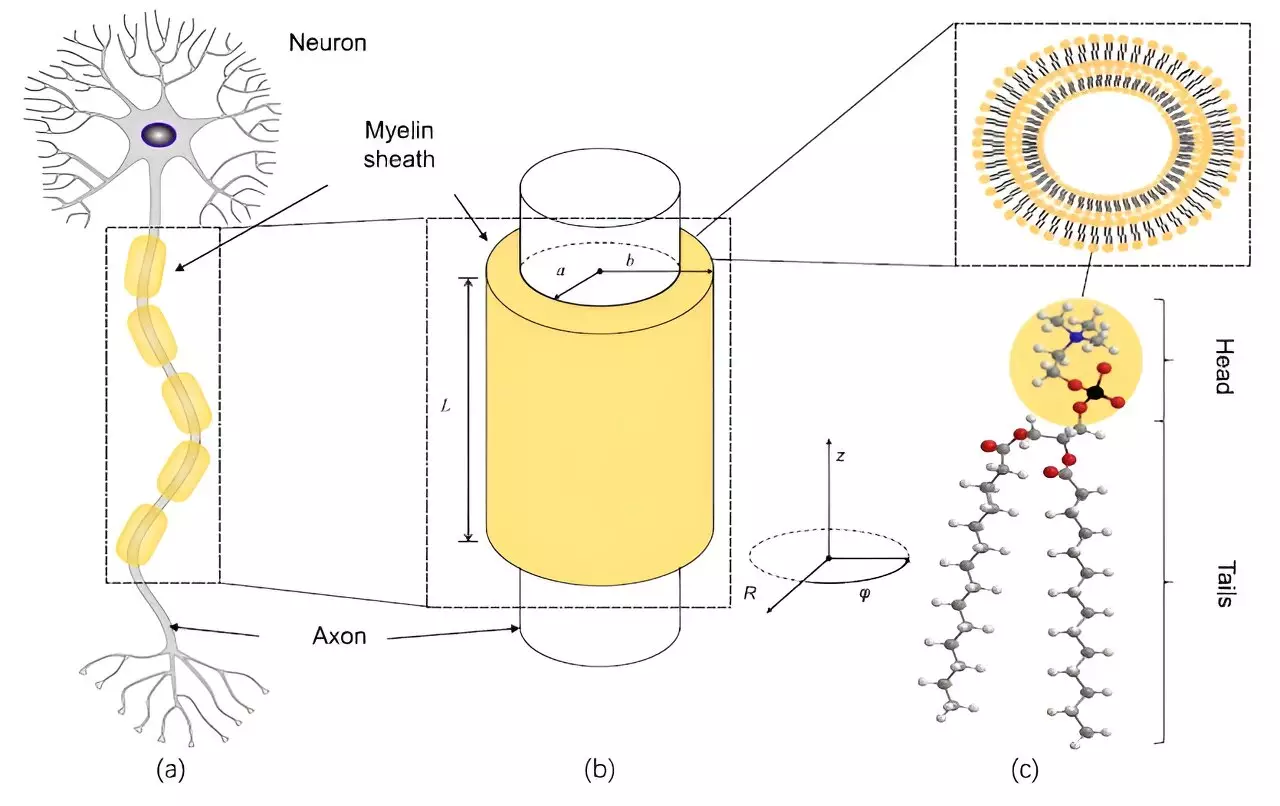The quest to unravel the enigma of consciousness has long been considered one of the most perplexing challenges in both science and philosophy. While traditional neuroscience approaches have focused on understanding neural activity through the lens of electrical and chemical signaling, an emerging line of thought suggests that quantum mechanics, particularly quantum entanglement, may play a pivotal role in this fundamental human experience. Recent findings from a research group in China propose a groundbreaking hypothesis that entangled photons within the myelin sheath of nerve fibers could offer a rapid communication mechanism among neurons, thus enhancing our understanding of consciousness.
The myelin sheath, a fatty layer enveloping axons, has traditionally been viewed primarily as a structural component that facilitates the transmission of electrical impulses along nerve fibers. However, recent research indicates that this sheath’s significance extends beyond mere insulation. It appears to play a crucial role in maintaining neuronal synchronization, the simultaneous firing that is essential for cognitive functions, such as perception and memory. Understanding this synchronization becomes imperative as traditional models constrained by the speed of sound in nerve signaling fail to account for the rapid and intricate processes that underpin consciousness.
The conventional view suggests that synaptic transmission—a process reliant on electrical signals jumping across synaptic gaps between neurons—is inherently limited by the speed at which neural impulses travel. This raises a significant conundrum: how can so many neurons achieve synchronization necessary for the complex functions of the brain when the mechanisms at play seem too slow?
In their study published in *Physical Review E*, Yong-Cong Chen and colleagues delve into the possible existence of quantum entanglement within the myelin sheath. In essence, they hypothesize that the entangled photons might foster instantaneous communication between neuronal components, which could reconcile the paradox of rapid neural synchronization. Their research identifies that during the metabolic processes in cells, photons are released in a cascading manner, suggesting the potential for a quantum state of entanglement.
By employing a method called cavity quantum electrohydrodynamics, the researchers modeled the myelin sheath as a cylindrical conductor, analyzing the effects of confined electromagnetic fields within this structure. Their analysis led to the identification of photonic entanglement, which can facilitate interactions between photons at unprecedented speeds. This opens up a captivating possibility—neural signaling may not be solely dependent on traditional physical mechanisms but may also harness the complex phenomena found within quantum physics.
The implications of these findings are vast and transformative. If indeed the myelin sheath can support the creation of entangled photons, it may signify a shift in our understanding of how neurons communicate with one another. It suggests that rather than merely relying on chemical and electrical signaling, neurons could leverage quantum phenomena to enhance their interactivity and synchronization. Within this framework, the process of communication among neurons could transcend conventional barriers, enabling more efficient and simultaneous processing activities.
Moreover, the researchers put forth a tantalizing proposition: the potential for entanglement to permeate potassium ion channels, which are instrumental in nerve signal propagation. This prospective interconnectedness could mean that processes occurring in distant brain regions might influence one another instantaneously, further extending the ramifications of this theory.
While the authors are cautious in asserting a direct link between quantum entanglement and consciousness, the intersection of these two realms provokes profound questions. Consciousness, still largely a mystery with an underlying complexity, might benefit from insights drawn from quantum mechanics. Would these entangled states provide a neural basis for the unified experience of consciousness, potentially transforming our understanding of mental states and cognitive processes?
As researchers like Chen explore the nuances of quantum mechanics in relation to neurological phenomena, the conversation around consciousness is poised for innovative exploration. Whether or not this angle will yield definitive answers remains uncertain, but it certainly enriches an ongoing dialogue that straddles the domains of neuroscience, philosophy, and physics.
The proposal that quantum entanglement could underpin neural coordination invites us to reconsider the frameworks we use to analyze consciousness. As science continues to probe the depths of the human mind, the synthesis between quantum mechanics and neuroscience presents an exhilarating frontier, one that could reshape our understanding of the most intricate aspect of human existence: consciousness itself.

